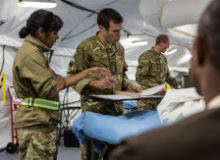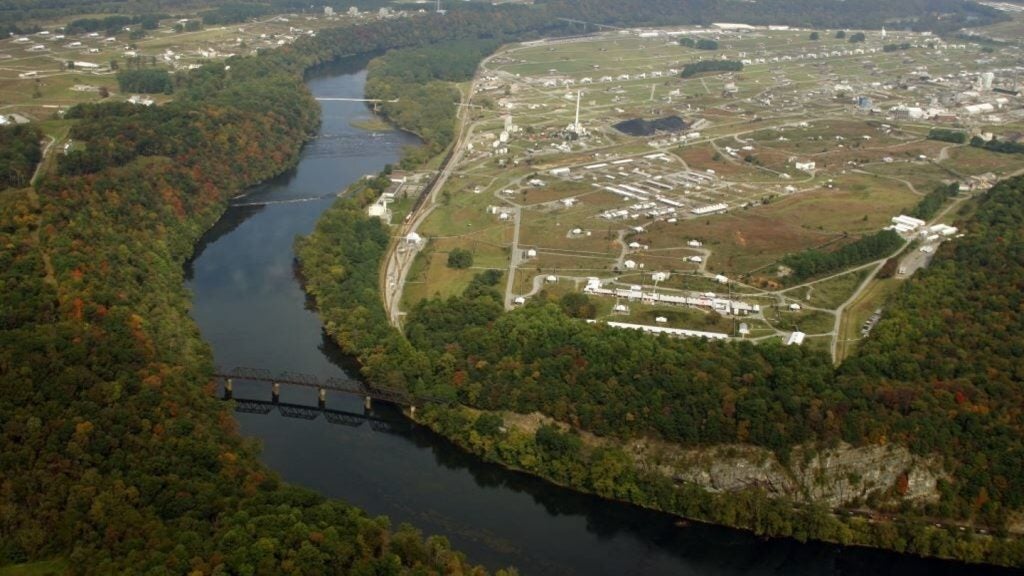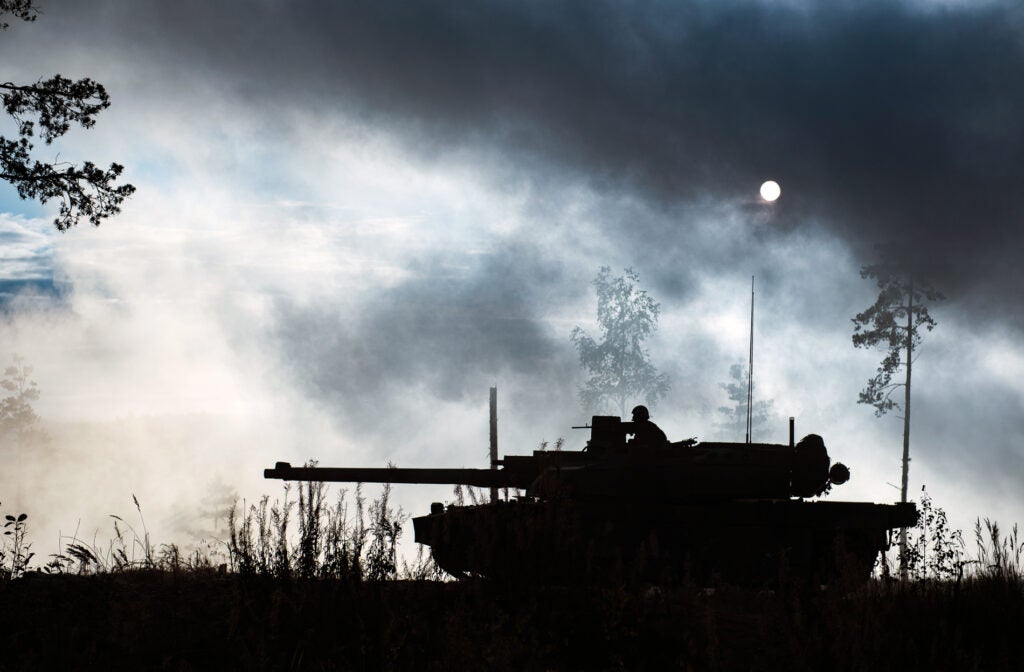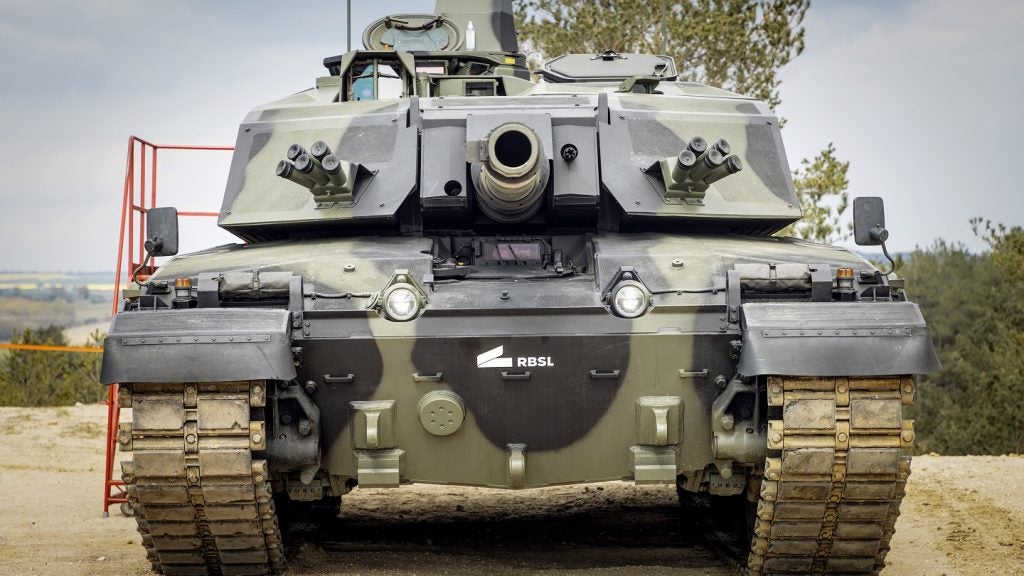

The hospital is designed to be deployed to a forward operating area to treat personnel on the ground and prepare them for transfer back to the UK for further treatment. Departments include a resuscitation unit, operating theatre, intensive care wards, advanced diagnostics, as well as the necessary infrastructure such as recovery wards, sterilisation, pharmacy and laboratory facilities. All equipment is state-of-the-art, for example the Marshall CT scanner designed to provide ultra-high resolution imagery in less than a minute, enabling diagnosis or essential surgery to take place.
A big step change is in the treatment capability for victims of chemical or biological attacks, which allows patients to be quickly cleaned before being taken into the hospital in order to keep staff and other patients safe from chemical or biological agents.
David Wilson, chief of staff of the 2nd Medical Brigade – which commands the army’s field hospitals – says that the new hospital with CB capability was procured to fill a gap in the British defence arsenal. "Over the last couple of years state and non-state actors have continued to pursue their interest in chemical and biological weapons and as such it was identified that we had a capability gap – this project was designed to fill that," he added.
Equipment, infrastructure, and personnel
The project was conducted as a single-course procurement with Marshall Aerospace and Defence. The company was able to draw on its existing military clinical and logistics experience and clearances, having previously provided medical facilities to the UK, Norway and France, including complete hospitals, CT scanners and laboratory systems.
See Also:
"The equipment delivery took place in April, and the process we are now undertaking is marrying up the clinical equipment with the personnel to work out the tactics, techniques and procedures that will allow us to deploy a Role 3 Field Hospital into chemical and biological hazard environments," Wilson explains. "This is the army’s first capability like this, and it will be complementary to our current field hospitals – while giving us a much better clinical environment and a CB safe environment – that we can deploy in a planned, deliberate operation for up to six months on a single site in a permissive environment."
How well do you really know your competitors?
Access the most comprehensive Company Profiles on the market, powered by GlobalData. Save hours of research. Gain competitive edge.

Thank you!
Your download email will arrive shortly
Not ready to buy yet? Download a free sample
We are confident about the unique quality of our Company Profiles. However, we want you to make the most beneficial decision for your business, so we offer a free sample that you can download by submitting the below form
By GlobalDataThe capability can be broken down into three distinctive parts: equipment, infrastructure and personnel.
The idea behind the project design was that the equipment used within the facility would come from the army’s existing deployed hospital care capability, as will the manning strategy. The manning is described in beds, with a structure very similar to the Role 3 very high readiness field hospital (VHRFH): 4/2/8/48 – four emergency beds, two surgical beds, 8 ITU beds, and 48 ward beds.
This includes an additional four ITU beds over the VHRFH standard, which ensure that the hospital can hold patients for the required 72 hour ‘lock-down’ period. This means the infrastructure for protection against chemical warfare agents should provide collective protection over all clinical areas and be sustainable for 72 hours – the maximum capacity for patients and staff during the period is 240.
Gaining flexibility with a modular approach
The infrastructure is based on pressurised air beam domed tents, many of which are fitted with bespoke hybrid fold-out containers. The mix of hard and soft military off-the-shelf containers and tents uses common modules with standard interfaces to enable adaptable configurations to suit mission needs. This approach will give the Ministry of Defence the ability to deploy part of the hospital by air to provide rapid deployment of an initial medical capability with the full capability following as force build-up develops. The flexibility and modularity of the layout, with a central spine and the wards branching off, allows for the facility to be expanded, adapted and reconfigured as needed to meet changing requirements.
"The inclusion of hybrid containers means we can improve the clinical standards over what is available in the field," Wilson explains. "For example, we are not having the sterilisation department carried in from the back of a truck and set up in a tent. It comes in a bespoke hybrid container, already plugged in; all we have to do, in essence, is give it power and water."
The supporting infrastructure also uses current in-service equipment, including generators, tactical base ablution units, sterilisation capability, water dispensing racks, laundry, communications and mortuary equipment. Similarly, power is provided by currently in-service generators to minimise impact on the army’s existing logistical requirements.
Additionally all power, water and other sub-systems are fully integrated as part of the infrastructure; and the hospital has full environmental control to enable staff to maintain the optimum temperature and humidity within a wide range of external climatic conditions. The hospital also features a hard, level flooring surface throughout – a useful benefit for the heavy equipment used around the hospital.
The future lies in modular design
In late November the army came to the end of the integrated test and evaluation assessment phase (ITEAP) for the hospital, which involved a full set-up and 72-hour lock-down test at the British Army’s Martinique training ground.
"ITEAP will produce a report about how we have met the target and key user requirements that we were required to test against," Wilson says. "Lessons exploitation and problem solving will continue on so that we can work through any teething issues and process issues and then the Department of Equipment and Support will produce a report against those key user requirements. From there we hope it will evolve into a declared defence capability.
"The future, in the long term, is the exploitation of its modular design – in the conventional VHRFH we have an air deployable version, and we’d like to look at that, and also at supportability. It has quite a huge logistic burden and we’d like to investigate where we can make savings against those."
At the time of writing, in early December, the declared defence capability was expected to be reached prior to Christmas. At that point the British Army will have a world-class capability to provide treatment to patients on deployment around the world, taking them from the point of injury and throughout the care chain to evacuation to home base all while providing state-of-the-art care.






